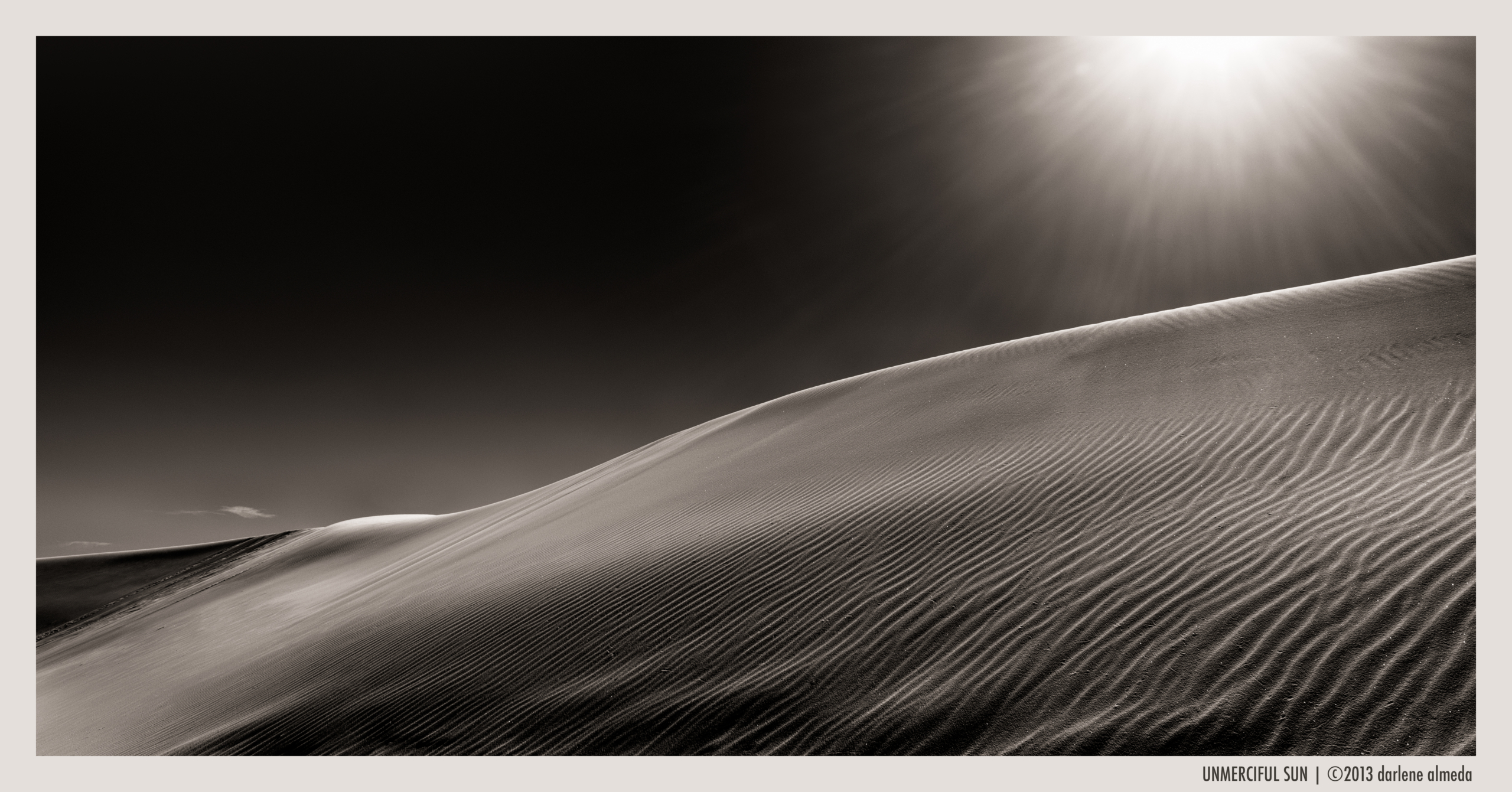Camera: Sony NEX-7 Lens: Sony E 16-70mm F4 ZA OSS Digital: 24 MP [23×16] CMOS Software: Adobe Lightroom
Location: White Sands NP, NM Date: 2013 Lighting: Daylight Genre: Landscape
The desert has a way of revealing truth. Beneath its blinding light, there’s no room to hide — from the elements or from yourself. My time at White Sands was shaped by exhaustion, heat, and a quiet reckoning. Yet in that stark landscape, I found beauty that asked for no forgiveness — only awareness. This image, Unmerciful Sun, came from that moment of surrender to both struggle and grace.
I wasn’t feeling my best the day I photographed at White Sands National Park. The trip had already tested me — a long, restless layover in Phoenix, followed by a drive from El Paso across the desert. I arrived drained from travel and emotionally worn by personal matters still lingering in my thoughts. Those feelings, raw and unresolved, eventually found their way into the haiku that accompanies this image.
Still, I was determined to make the most of being there. The dunes were luminous and endless, and the sun — fierce and absolute — seemed to burn straight through the horizon. The park was crowded, the air still and dry, and the light so bright it bordered on merciless. Yet within that intensity was something cleansing, something honest. The neighboring towns of Alamogordo and Cloudcroft offered rest and contrast — cool shade, friendly faces, and quiet charm.
For this journey, I traveled light, bringing only digital gear: my three Sigma DP Merrill cameras and the Sony NEX-7. This photograph was made with the Sony paired with my favorite 16–70mm f/4 ZA OSS lens. While the Sigmas have their own poetic voice — rich color and extraordinary depth — they struggle in hard sunlight. The Sony, nimble and forgiving, became my companion for this series.
I intentionally pointed the lens into the sun to capture the tension between brilliance and desolation. The flare that followed was expected, but later removed in Lightroom. Adobe’s tools have evolved in ways the darkroom never could — allowing precision and subtlety that feel painterly rather than mechanical. The process, though digital, mirrors the same patience and care once required beneath a safelight.
This image holds a special place for me for two reasons. First, it was created in a moment of simplicity — no elaborate setup, no filters or stitching, just composition and intuition. I bracketed exposures in two-stop intervals, and the +2 frame captured exactly what I wanted: a balance of radiance and texture without losing detail to the sun. Second, the image carries the weight of that day — the fatigue, the ache, and the quiet strength that comes from continuing anyway.
The experience deepened my connection to both photography and writing. Through the camera, I documented light; through the haiku, I recorded emotion. Though made in 2013, this photograph remains one of my favorites — a reminder that even the harshest light can illuminate something within us.
As photographers, we often discover that our inner weather shapes what we see. In those moments of challenge, art becomes more than a record — it becomes a reflection of endurance and truth.
an unmerciful desert
broken heart journey
Author’s Note: Photography, for me, has always been as much about feeling as seeing. The camera records light, but the artist interprets it. On that day beneath the desert sun, I learned that beauty doesn’t always reveal itself gently. Sometimes, it demands everything — patience, resilience, and a willingness to stand in the heat until vision becomes meaning.

